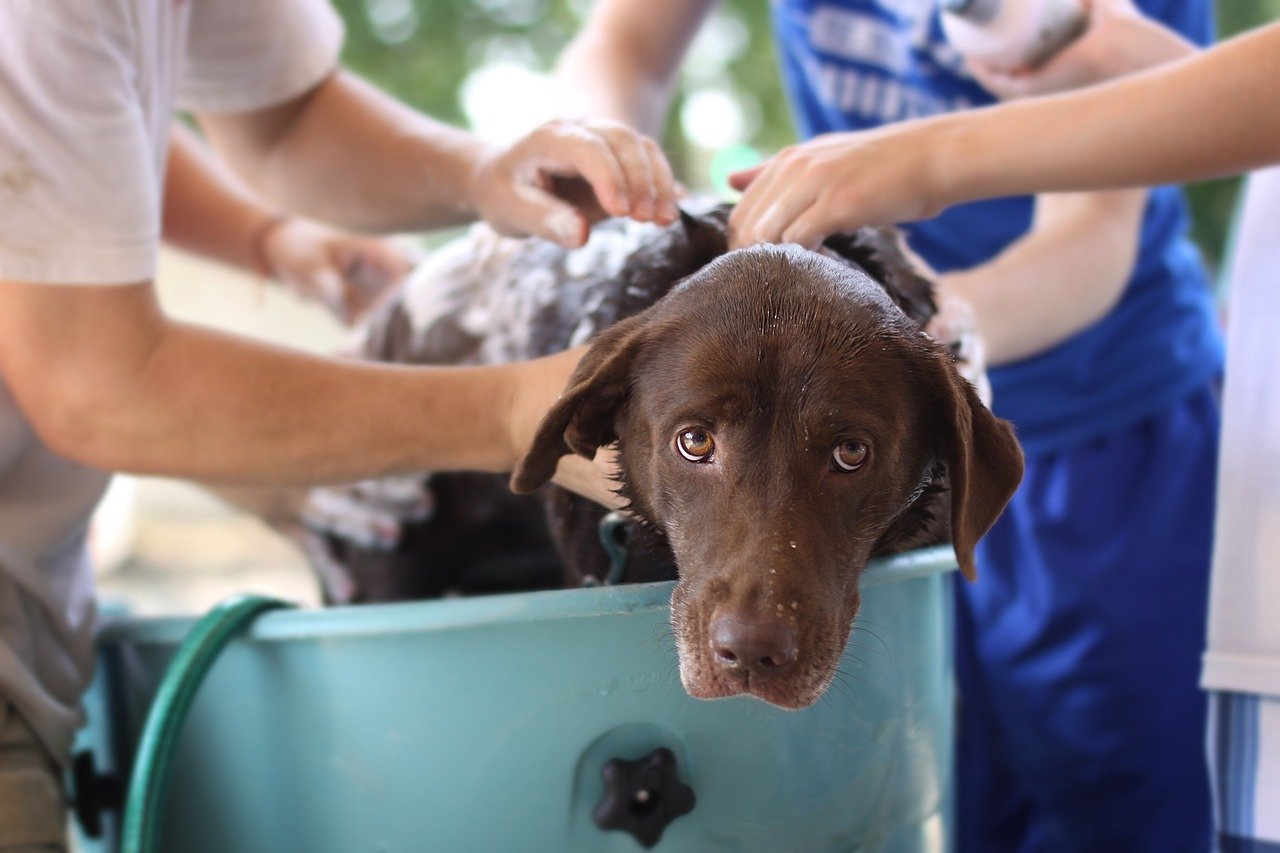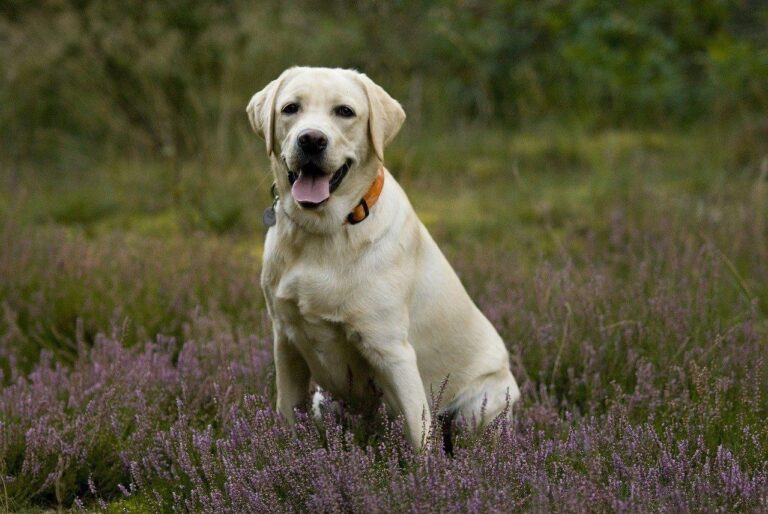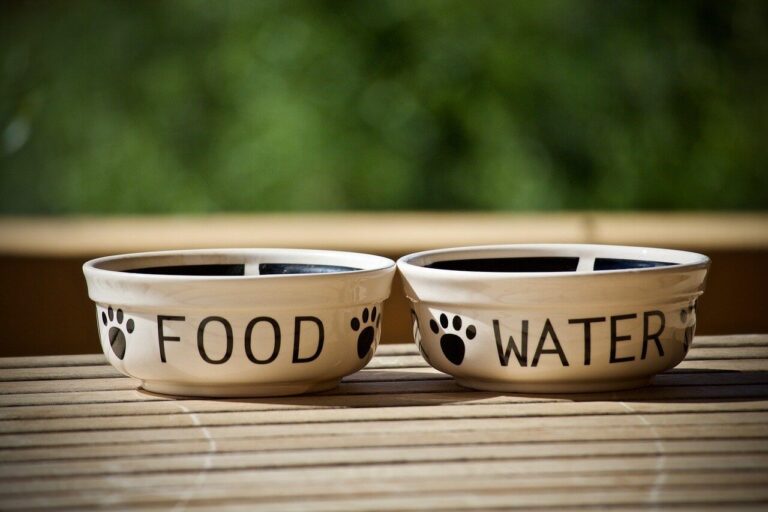Labrador Retrievers can find plenty of ways to have fun and get dirty, even ones that live a mellow life on the couch.
And as Labradors excel for their performance in the water, you might think they naturally come clean when swimming, but this isn’t always the case.
As a Labrador owner, you might be wondering, “How often should I bathe my Lab?”
A good schedule for bathing your Labrador Retriever is approximately once a month, though this will depend on your lifestyle and the activity level of your particular dog.
(This article may contain affiliate links. As an Amazon Associate I earn from qualifying purchases. Learn more)
We’re going to go over this in more detail and give you tips on Labrador bathing and grooming to make things easier for you and your dog.
Let’s get started!
How Often Should I Bathe My Lab? Labrador Bathing & Grooming
Benefits of Regular Labrador Bathing & Grooming
Labradors are fairly low-maintenance dogs when it comes to bathing and grooming. They don’t have the need for haircuts or frequent, expensive trips to the dog groomer like many other breeds do.
However, they do need occasional baths, and there are some positive benefits of keeping your Labrador on a regular schedule of bathing and some basic grooming.
As Labradors have a double coat and are a high-shedding dog breed, regular baths might help remove some of their excess fur, and you might notice less shedding around your home.
For more tips on how to deal with a high-shedding dog breed like the Labrador Retriever, check out our article on Lab shedding and strategies to deal with it here.
Occasional baths will also help your Labrador smell cleaner and remove the likelihood of “dog smells” around your house.
Baths will also help your Labrador’s beautiful coat look even more glossy and rich, and will help remove any dry skin or excess dander present on the dog.
If you have allergies or share your home with someone with dog allergies, a frequent schedule of bathing for your Labrador will be critical in helping manage the dander that may significantly affect your allergy symptoms.
Don’t bathe your dog too often, because it can dry out their skin and fur. Use only gentle dog shampoos or baby shampoos and do not use harsh products. Our Labradors have also never needed conditioner, just a gentle shampoo!
Now that we’ve covered the benefits of keeping your Labrador clean, let’s move on to more about, “How often should I bathe my Lab?”
Prepare for Labrador Bath Time
- Begin by deciding where the best location in your home is for giving your Labrador a bath. You’ll want either a shower or a bathtub with easy access in and out for you and your dog.
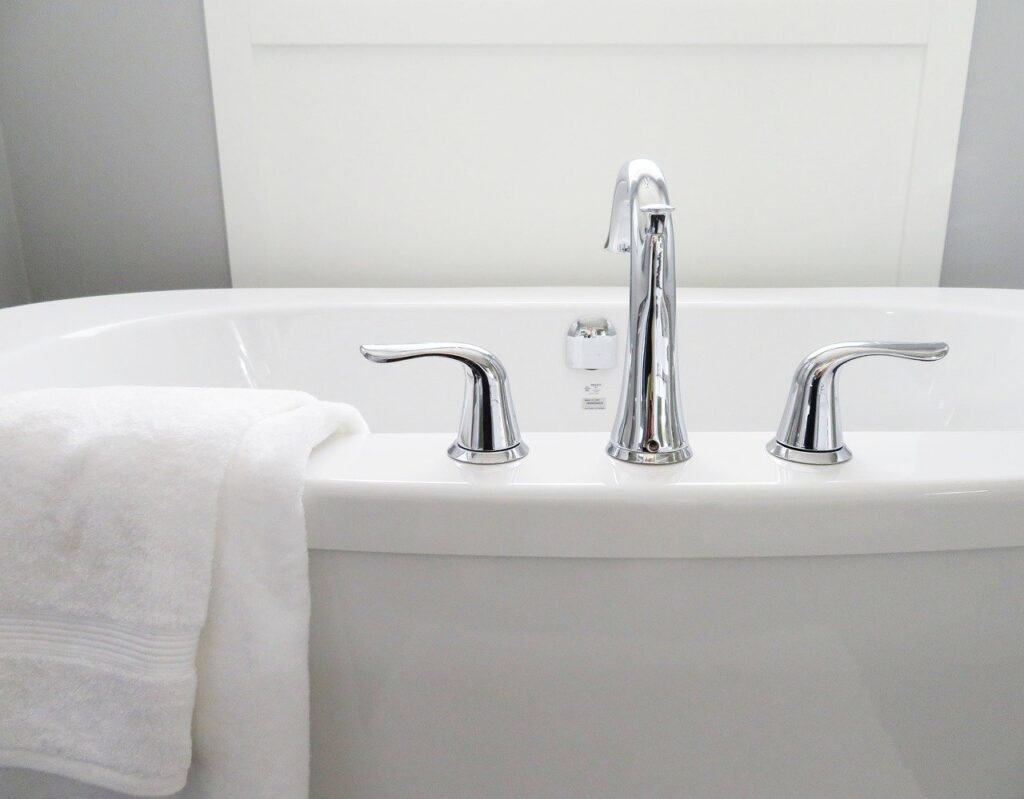
- You can also consider giving your Lab a bath outside, if you have warm weather and if you have a secured yard or area where they won’t be able to run off during their baths.
- Another option for where to give your Labrador a bath is a location such a pet store or dog grooming center where they offer bath facilities. You can pay for a dog wash and leave the mess at the center, instead of at your house.
- We recommend that if you’re doing bath time at home, you keep the bathroom door closed while giving your Labrador a bath. We’ve had many Labrador escape attempts that were thwarted by confining them inside the room and preventing them from running out.
- Take your dog potty outside before bath time begins. You don’t want any bathtub surprises later on!
- Do not give your dog a bath right after they eat, because it could cause too much excitement, which might result in an upset doggie stomach.
- Brush your dog with a Furminator or with another type of dog brush before bath time to remove some of the excess hair and have less mess in the tub.
- Make sure you have the appropriate supplies before you begin: large quantity of towels, dog shampoo (or gentle baby shampoo), and a bowl or cup to aid in pouring water.
- Also make sure you have non-skid mats around your tub or shower. Your dog might jump out and be very excited at the end of the bath, and there might end up being a lot of water on the floor. This will help both you and your dog not slip and fall during and after bath time.
Labrador Bathing Tips
- Begin your dog’s bath by getting them wet first in sections, not their entire body at once. Leave their head area for last. When a dog’s head and ears become wet, they will want to shake off, getting you and everything around you wet (and hairy).
- Shampoo their body in sections, and rinse off afterwards before moving to another section. You can do their back, tail, and legs, for example, each in sections. Your dog might enjoy this rubbing and scratching part of bath time!
- Although Labradors are famous for being water dogs, they often tend to rebel during bath time and act like they want to get away!
- You can use either a bathtub or a shower with a detachable hand-held showerhead, which will work well to reach areas on the belly and underneath of your dog.
- When washing around their ears and face, be very careful not to use too much water or shampoo, which just as in humans, can get into their eyes and become uncomfortable.
- If you get water down into the Lab’s ear canal, it can eventually cause ear infections in your dog. Be careful to block the ear with your hand to prevent water going in it, or use a towel in front of their ear. Use a bowl or cup to gently pour water over their head, instead of using a showerhead with too much force here.
- Dry your Labrador off in sections, using multiple towels. If you find that your Lab is cooperative to a blow dryer, you can also use that on a gentle setting, but do NOT get the dryer too hot.
- Be aware that Labradors do take a while to dry, and even after using multiple towels it still may take a few hours for your pet to dry completely. Plan to keep them inside after bath time for several hours, until they are dry, especially if you’re in cold weather.
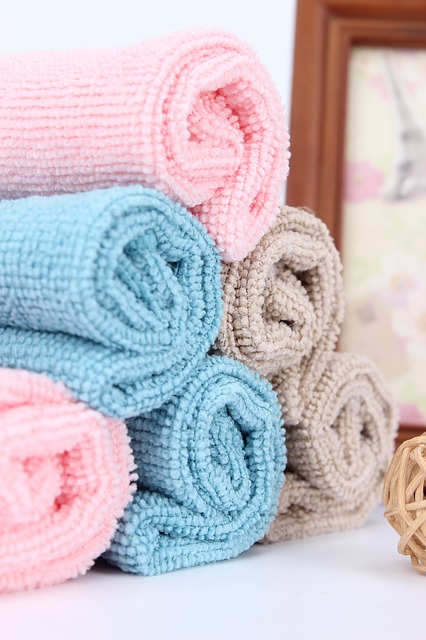
- Dry off your Labrador’s head and ears very thoroughly, to minimize their discomfort and the amount of shaking off that occurs after bath is over.
- Labradors may also run around when being released from their baths, and you should expect a bit of frenzy and excitement from your dog when you’re done. Sometimes bath time can even trigger a case of the Dog Zoomies, so read more about what to do in our article about Dog Zoomies if that happens to you!
Bathing a Labrador Puppy
If your bathing your Labrador puppy for the first few times, be very careful to go slowly and not scare them with loud sounds and over-stimulation of bath time. It can be exciting for puppies but also a bit of an overwhelming experience at first.
Especially if your Lab puppy has not been accustomed yet to the water, they might be a little shy or timid at first stepping into the bath.
On their first few baths, you don’t need to soak your puppy completely; in fact, we recommend you start gently with just washing paws or legs and then work your way up a few weeks later to have more of the puppy washed.
Take it slowly and your Labrador will learn to love bath time!
Go too quickly and you might have a Lab who becomes anxious or skittish when they realize it’s time for a bath in the future.
Bathing Tips for Older Dogs
If you have an older Labrador who’s accustomed to bath time, your bathing efforts might go very smoothly if you’ve kept to a good routine.
If your Lab is older than a puppy, but not as used to bath time, you might have a little difficulty keeping them cooperative and confined during their baths, especially if they try to bolt!
If you have more than one dog, especially a Labrador Retriever, while it might seem easier to give them both a bath at the same time, we suggest you bathe them separately, unless you have someone to help you.
Be aware that if you have a senior dog, they might have more joint stiffness or issues that prevent them from being able to jump in and out of the bathtub.
You might want to find a place in your home, such as the shower, that allows your senior Lab to walk in and out without having to jump or climb.
Grooming Tips
During your Labrador’s monthly bath time, you might want to take a look at how clean their ears are and how long their nails are.
You can purchase an at-home nail trimmer to trim your dog’s nails yourself, but please make sure you get your veterinarian or a vet tech to show you how it’s done FIRST.
You can really hurt your dog’s paws if you cut their nails too short, which can cause them to bleed. It’s important to have someone trained to show you what to look for on the underside of the nail to know how little to take off.
When in doubt, just take them in for a nail trim. At our veterinarian’s office, it’s about $20 per dog for a trim, and they can often do it much quicker because they are so experienced at it.
You can also buy ear cleaner at your veterinarian’s office or at a pet store. You’ll want to ask your vet for a recommendation on what type of product your particular dog needs because not all ear cleaners have the same ingredients.
If you get an ear cleaner with alcohol as one of the ingredients, it can sting your Lab’s sensitive ears (especially if they have any irritation). Just ask your vet what the gentlest one they recommend for prevention is.
If you have a swimming pool, or if you take your dog in the water often, you’ll want to stay on top of drying your dog’s ears after exposure to water to prevent any ear infections from starting that way.
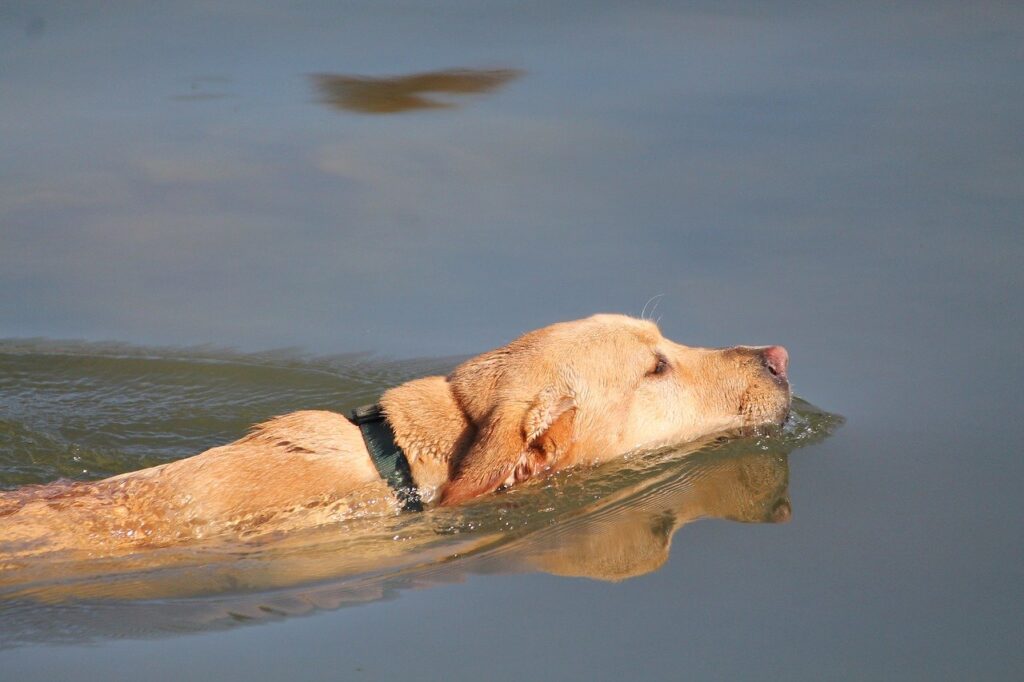
Summary – How Often Should I Bathe My Lab?
Labradors are fairly low-maintenance dogs when it comes to bathing and grooming. They don’t have the need for haircuts or frequent trips to the dog groomer, but they do need occasional baths to stay clean and in good health. Luckily this is something you can do at home.
A good schedule for bathing your Labrador Retriever is to bathe them approximately once a month, though this will depend on your lifestyle and the activity level of your particular dog.
With a few easy strategies, bath time can be fun for both you and your Labrador, and you’ll have a clean-smelling dog ready for snuggles on the couch!

